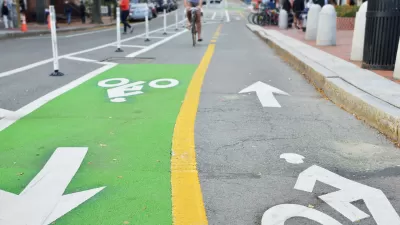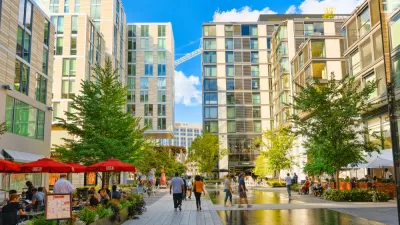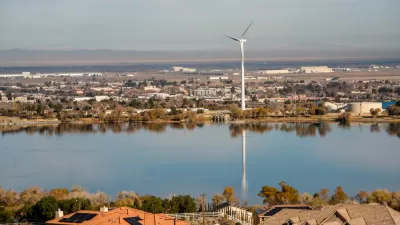This past Friday, demolition began on a segment of Baltimore's infamous "Highway to Nowhere" to expand parking for the local commuter rail service (MARC). A side benefit: reuniting communities separated since the 1970s.
In a press release, Governor Martin O'Malley (who was also at the groundbreaking), said:
"The communities of West Baltimore have been frustrated and divided by this concrete wall for nearly four decades," said Governor O'Malley. "It is time to remove the unnecessary divider, reunite communities and make neighborhood-friendly improvements to the MARC station while creating jobs. With the Red Line and our transit oriented development vision for the area moving forward, the future of West Baltimore holds great promise."
The Governor's press release notes that in the original construction of the freeway, "Nearly 700 homes were taken, displacing working-class families, by the time construction of what was known as I-170 got underway in 1974. Public opposition by civil rights leaders, community activists and others to a network of urban highways that were planned to cut through the city eventually stopped construction of I-170 but not before a 1.4 mile section was completed through West Baltimore."
Thanks to John Coleman
FULL STORY: Governor O'Malley Breaks Ground on Removal of West Baltimore's 'Highway to Nowhere'

Americans May Be Stuck — But Why?
Americans are moving a lot less than they once did, and that is a problem. While Yoni Applebaum, in his highly-publicized article Stuck, gets the reasons badly wrong, it's still important to ask: why are we moving so much less than before?

Using Old Oil and Gas Wells for Green Energy Storage
Penn State researchers have found that repurposing abandoned oil and gas wells for geothermal-assisted compressed-air energy storage can boost efficiency, reduce environmental risks, and support clean energy and job transitions.

Placekeeping: Setting a New Precedent for City Planners
How a preservation-based approach to redevelopment and urban design can prevent displacement and honor legacy communities.

San Francisco’s Muni Ridership Grew in 2024
The system saw its highest ridership since before the Covid-19 pandemic, but faces a severe budget shortage in the coming year.

Colorado Lawmakers Move to Protect BRT Funding
In the face of potential federal funding cuts, CDOT leaders reasserted their commitment to planned bus rapid transit projects.

Safe Streets Funding in Jeopardy
The Trump administration is specifically targeting bike infrastructure and other road safety projects in its funding cuts.
Urban Design for Planners 1: Software Tools
This six-course series explores essential urban design concepts using open source software and equips planners with the tools they need to participate fully in the urban design process.
Planning for Universal Design
Learn the tools for implementing Universal Design in planning regulations.
Heyer Gruel & Associates PA
City of Moreno Valley
Institute for Housing and Urban Development Studies (IHS)
City of Grandview
Harvard GSD Executive Education
Salt Lake City
NYU Wagner Graduate School of Public Service
City of Cambridge, Maryland





























